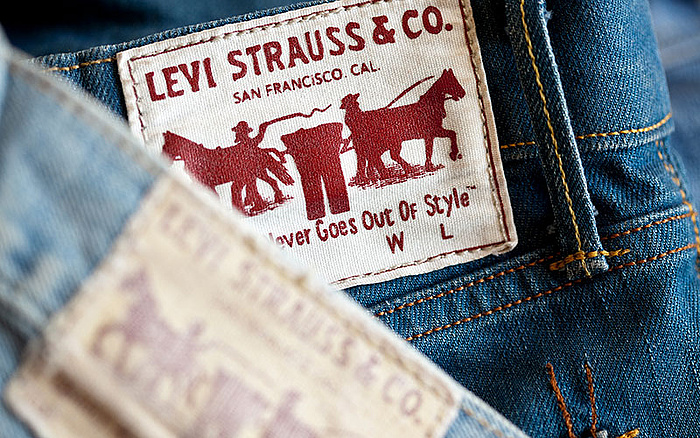
Everyday IP: The history of jeans
From haute couture to the most utilitarian everyday apparel, the clothing industry as we know it today would not be the same without jeans.
Telling the story of jeans requires us to go back even further than for socks. The relationship of jeans to the world of Intellectual Property (IP) is not nearly as old as the garment's origin — but it is an integral aspect of their cultural significance.
When were jeans invented?
While not an easy question to answer, it is safe to say this: Jeans' "birthday" was not May 20, 1873, as Levi Strauss and Co. claims — though this brand has a pivotal part to play in their history.
In fact, the origin of jeans cannot be pinned down to one place or date, but there are a few early milestones:
- In the 15th century, when the Italian city of Genoa was still an independent power, there were work pants made of the same cloth as ships' sails. The French name for Genoa, "Gênes," is generally believed to have eventually produced the word "jeans."
- The hard-wearing twill fabric for these Italian garments was sourced in Nîmes, France. Referred to as "serge de Nîmes," it evolved into the modern "denim."
- Workers in Dungri, India, are known to have worn pants made of a tough fabric dyed blue with indigo in the 17th century. Hence the term "dungarees," an English colloquialism for jeans (and various other types of pants) most common in the first half of the 20th century.
It is perhaps fitting that a garment now known all over the world owes its origin to several different cultures.

Durable fabric and a comfortable fit make jeans an easy choice for modern cowboys, who continue to spend long hours on horseback, tending cattle in the rugged American West. Thanks to their practicality, jeans have become an icon of the cowboy lifestyle.
Indigo dye, with which the earliest jeans (and many of today's denim pants) are associated, was first cultivated in Peru around 6,000 years ago. It became more widely known as a key export of classical India, being highly sought-after in the Roman Empire and beyond. The Greek, Persian and Levantine traders who exported it charged heavily for the precious commodity.
Indigo production increased massively with the British colonization of India and the rise of the trans-Atlantic slave trade. Introduced to South Carolina during the mid-18th century by slave owner Eliza Lucas, it quickly became a major cash crop for the state as plantations labored over by African slaves spread. Toward the end of the 19th century, British-controlled indigo plantations had become the biggest source of the dye. In time, synthetic production methods supplanted cultivation as the primary source of indigo dye.
The riveter and the entrepreneur: Davis and Strauss
Denim pants, not dissimilar to modern jeans, were common among workers in numerous parts of the world throughout the early and middle 19th century. But they lacked the durability we now take for granted in jeans. This is where the holders of U.S. patent 139121A — Jacob Davis and Levi Strauss — enter the scene.
Born in Latvia, Davis was a Reno, Nevada-based tailor while Strauss, a German immigrant, had become a successful dry-goods merchant in San Francisco. Some say a mining company commissioned Davis to make stronger pants; others claim a laborer's wife asked the tailor personally for the design. Either way, Davis had the revolutionary idea to sew metal rivets into the areas of the pants that bore the most stress, like the (single) front right pocket. He contacted Strauss to supply the denim, Strauss recognized riveted pants' market potential, and the two formed a business (hence Strauss' name as a patentee).

Though not quite all sewn up, Levi Strauss and Co. has held a strong position in the denim industry for generations. This success is due in no small part to a solid brand identity and rigorous IP protection strategy.
Thanks to that patent, Levi Strauss and Co. effectively monopolized the jeans market for decades. The company's product remained popular even after the patent's 1890 expiration and the subsequent emergence of strong competitors, including Lee, OshKosh and Wrangler. Saying "Levi's" is effectively a synonym for "jeans" these days, as the company has reinforced its branding with thousands of trademarks. The red tab logo near the right back pocket, introduced in 1936, is easily one of the best-known of these.
Zipping up
W.L. Judson invented the zipper in 1891 (for shoes), receiving a patent in 1893. Swedish-American inventor Gideon Sundback devised and patented a zipper very similar to those seen today about 20 years later. But Levi's jeans used a button fly for almost a century of the pants' existence, as did their competitors.
Other than shoes and some motorcycle jackets, zippers were mostly used for bags and accessories in their early history, only becoming somewhat common in clothing in the mid-1930s. Women's jeans were some of the first styles to adopt this new technology (it was considered more modest than buttoning), but Levi's did not make zippers its standard fly-fastening device until the 1970s.
As for the term "zipper," the B.F. Goodrich Company registered it as a trademark in 1925. But beyond a legal dispute in 1931, it showed little interest in the IP as its business shifted to other manufacturing concerns (namely tires).

Zippers: the unsung heroes of fashion and convenience! These tiny metal teeth have reshaped the world of denim and beyond. Incredibly resilient, they are able to stand up to daily wear and keep your clothes secured no matter how much you move around.
Although the World Intellectual Property Organization (WIPO) Global Brand Database reveals numerous entries for "zipper," none relate to the fastener on many modern clothes. An attempt to register "zipper" for that purpose today would likely be dismissed for lack of distinctiveness, as the invention is now even more prevalent than jeans themselves.
Beloved across generations and cultures
The most expensive jeans on today's market are those from luxury brands, especially European design houses (Louis Vuitton, Balenciaga, Prada, etc.). But the creation of modern jeans by Levi's placed the United States at the epicenter of jeans' pop-cultural impact.
The pants' origin as working-class mining and ranching apparel all but guaranteed their presence in the movies idealizing the pursuit of the American Dream. Yet the pants were just as vital to actors and movies who symbolized rebellion (think Marlon Brando in "The Wild One" and James Dean in "Rebel Without a Cause").
With the hippie embrace of jeans in the 1960s, each successive generation has found new reasons to adopt them, and those who were already wearing them had no reason to stop. That is a testament to a timeless product— and the impact of IP rights.
Filed in

Explore inventions inspired by sci-fi books, movies and TV shows to see how IP law bridges the gap between fact and fiction.



